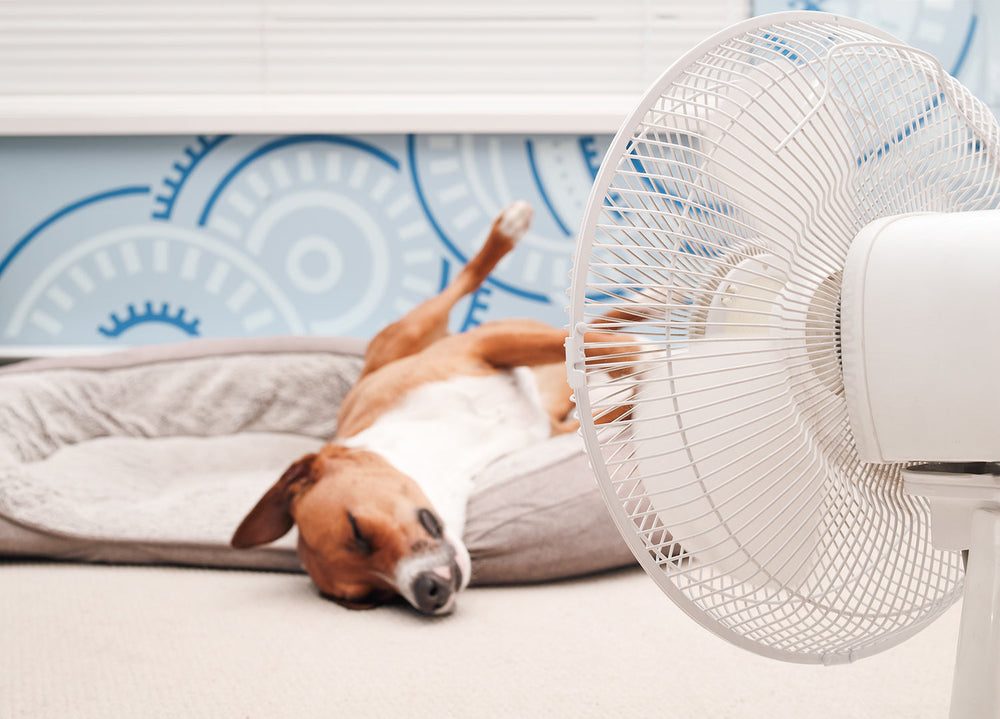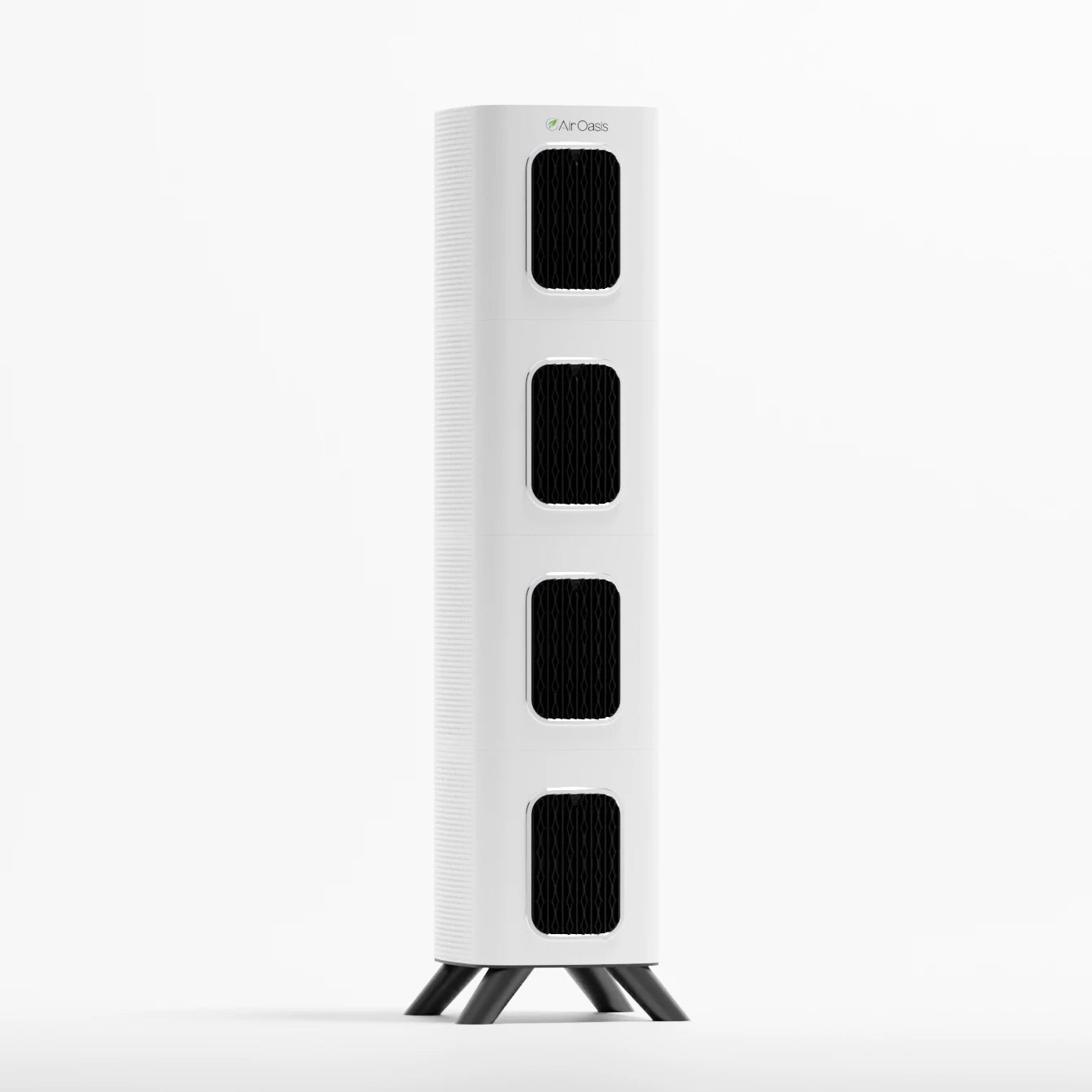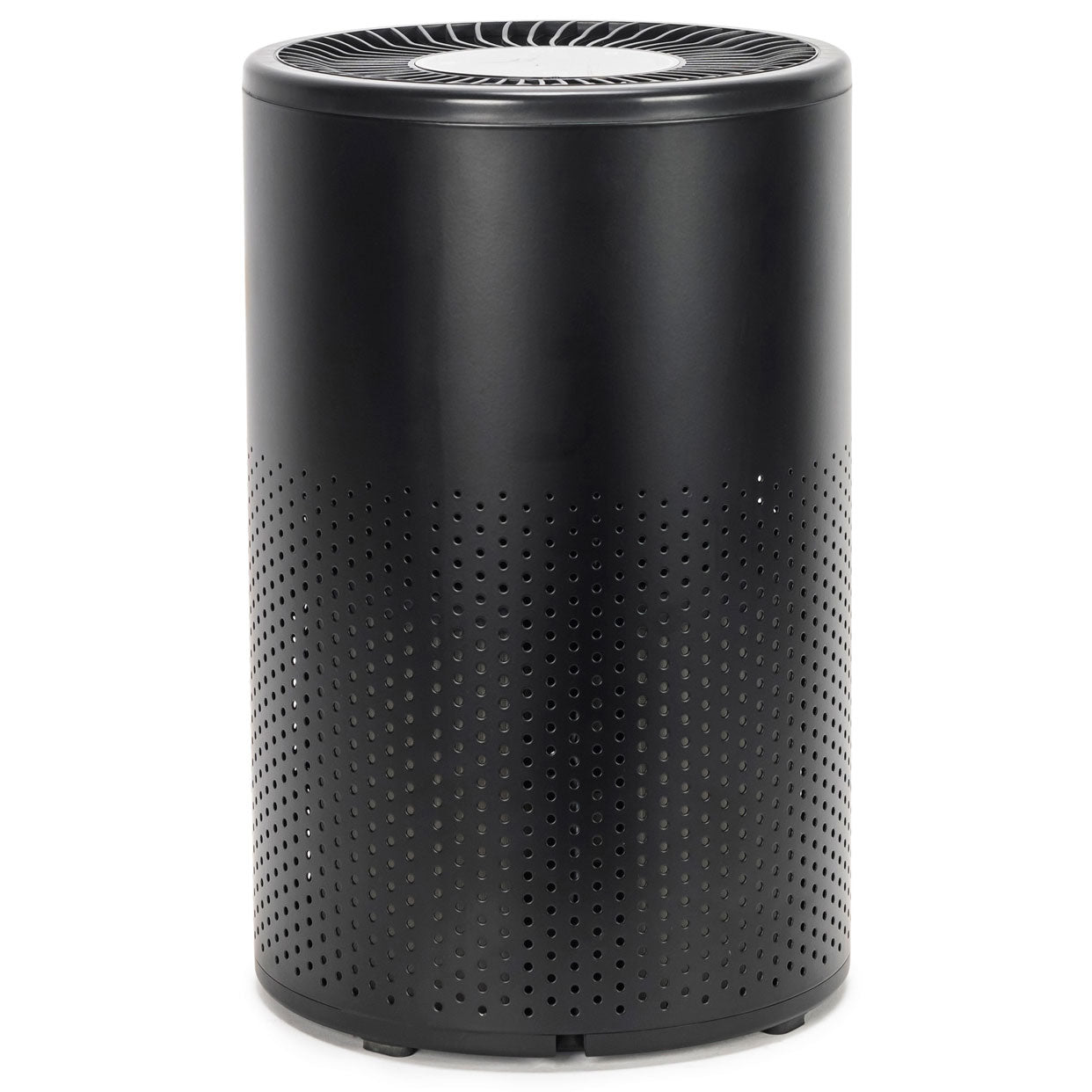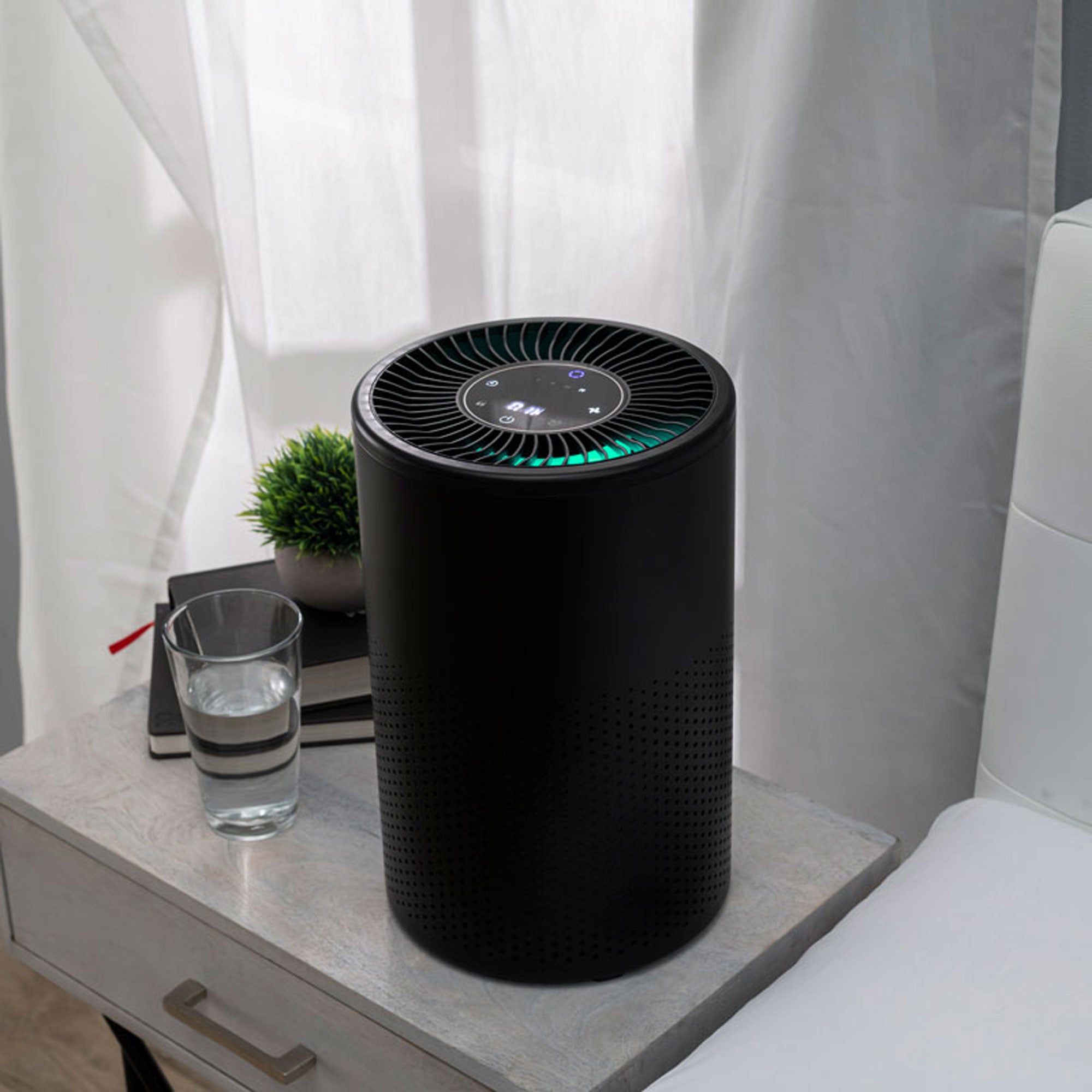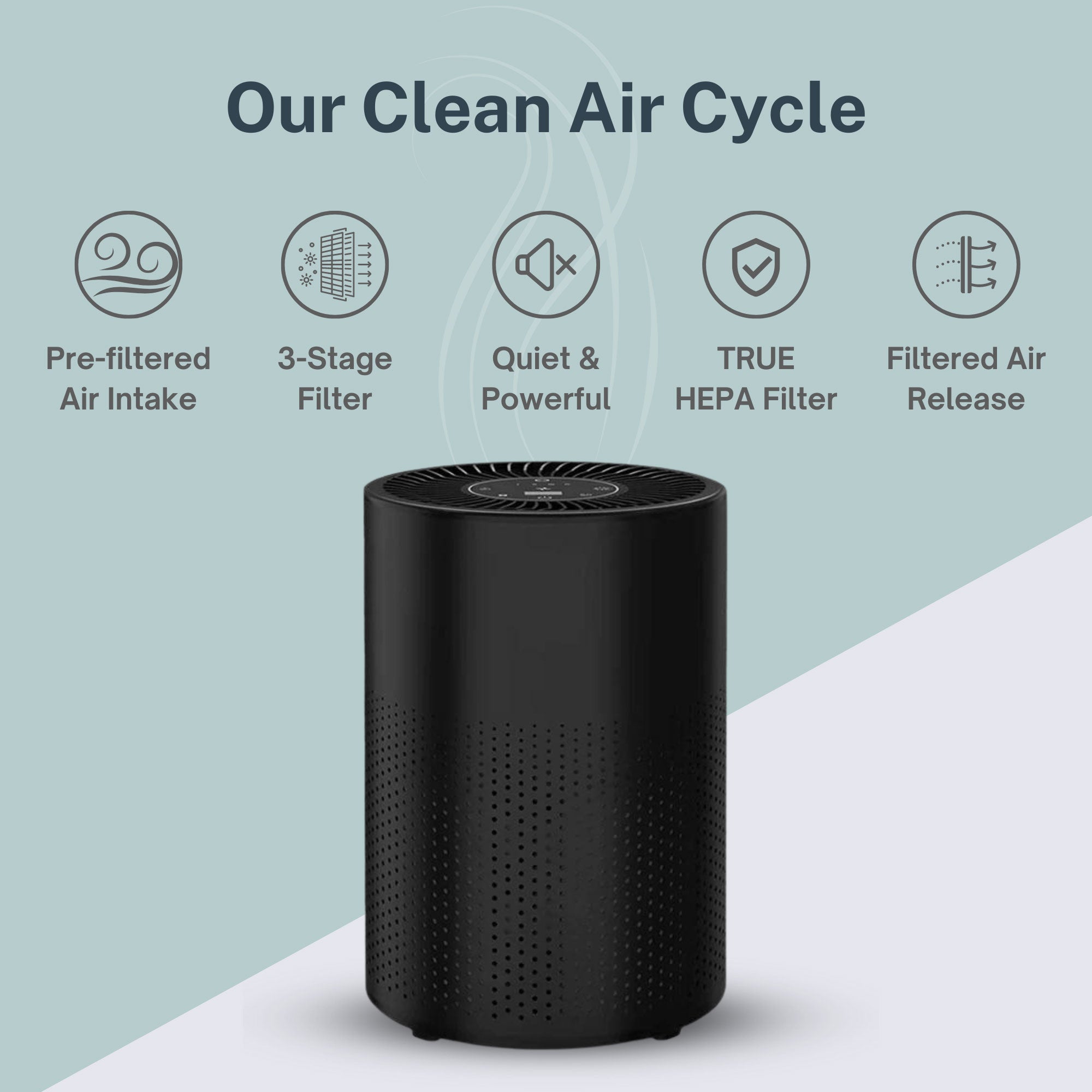Picture this: It's a sweltering summer day, and you've just invested in a new air purifier. As you switch it on, you notice a gentle breeze, and after a while, the room feels more comfortable.
“Ah,” you think, “the room is cooler already!”
But is it really? This scenario plays out in homes everywhere, leading to a common misconception about air purifiers.
Many people believe these devices not only clean the air but also cool it. It's an understandable assumption, given the comfort clean air can provide. However, the relationship between air purifiers and room temperature is more complex than it might seem at first glance.
Will an Air Purifier Cool Your Room?
Let's cut to the chase: air purifiers don’t actually have a cooling effect, at least not in the way you might think.
These devices are primarily designed to clean the air, not to alter its temperature. Unlike air conditioners or fans, which are built specifically to reduce air temperature or create a cooling effect through air movement, air purifiers have a different mission.
So why do so many people believe air purifiers can cool a room? The answer lies in the subtle ways these devices can affect our perception of comfort.
But before we explore that, let's take a closer look at how air purifiers actually work.
Understanding How Air Purifiers Work
Air purifiers are designed to remove contaminants from the air and improve overall air quality.
Here’s how it typically functions:
- Air intake: The purifier uses a fan to draw in air from the surrounding environment.
- Filtration: As air passes through the device, it goes through various filtration stages, each designed to target specific types of pollutants, including dust, allergens, and mold spores.
- Clean air release: Once the air has been purified, it's released back into the room.
This process continues to cycle, gradually improving the air quality in your space over time. And the higher quality air purifier you use, the greater the impact.
For example, here’s how Air Oasis’s iAdaptAir 2,0 series works:
- Multi-stage filtration: The air passes through a series of filters, including a medical-grade HEPA filter, carbon filter, and silver antimicrobial filter, to remove dust, allergen, and mold particles of various sizes.
- Bi-polar ionization: This feature creates charged particles that attach to and neutralize harmful airborne substances.
These purifiers come in different sizes to suit various room dimensions, and they feature a user-friendly touchscreen interface. For added convenience, you can control the device wirelessly through the Air Oasis Home app.
While these processes significantly improve air quality, they don't directly affect air temperature.
So why do some people feel cooler when using an air purifier?
Why A Room Might Feel Cooler With an Air Purifier
Air purifiers don’t cool the air, but many people still feel that way. Let’s break down the biggest reasons why.
Airflow and Direction
Air purifiers create air movement as they intake and expel air. This circulation can create a slight breeze effect, which may make you feel cooler due to increased evaporation of moisture from your skin. It's similar to the effect of a light breeze on a warm day—you feel cooler, even though the air temperature hasn't changed.
This effect is called “evaporative cooling.” In short, when air moves across your skin, it helps evaporate sweat more quickly. This evaporation process requires energy, which is drawn from your skin in the form of heat. As a result, your skin feels cooler, even though the room's ambient temperature remains unchanged.
To maximize this effect, consider the placement of your air purifier. Positioning it so that the clean air output is directed towards areas where you spend the most time can enhance this sensation of coolness.
Fan Function in Air Purifiers
While air purifiers do have fans, they're not designed to be used like traditional cooling fans. Air purifiers use fans mainly to draw air through the filtration system, not to create a cooling breeze.
These are typically optimized for quiet operation and efficient air movement through the filters. They're not as powerful as those in standalone fans or air conditioners, which are designed specifically for moving large volumes of air to create a cooling effect.
Air Quality and Perceived Temperature
Improved air quality can indirectly affect how good you feel in a room. When an air purifier removes pollutants and allergens, the room can feel fresher and more comfortable.
This improved air quality might be mistaken for a cooler temperature. For example, removing airborne irritants can reduce inflammation in your nasal passages and lungs, making breathing easier and more manageable. While you won’t necessarily feel cooler, you’ll be more at ease in your space.
Specific Conditions Affecting Comfort
While they don’t actually change room temperature, air purifiers can create other effects that indirectly make it feel cooler:
- Eliminating stuffiness: By removing airborne particles and improving air circulation, a room can feel less stuffy and more pleasant. This can be especially noticeable in small or poorly ventilated spaces.
- Removing heat-trapping particles: Airborne particles can sometimes trap heat, contributing to a warmer feeling room. By removing these particles, the air might feel slightly cooler.
Ultimately, while they do make you more comfortable, air purifiers are primarily designed for air quality improvement, not temperature control. For optimal comfort, consider using an air purifier in conjunction with other cooling systems.
Alternatives for Cooling the Room
If your primary goal is to cool a room, there are more effective options than air purifiers.
Air Conditioning Units
Unlike air purifiers, air conditioning units use refrigeration to actively cool the air.
The process involves:
- Drawing in warm air from the room
- Passing it over cold evaporator coils to remove heat and moisture
- Releasing the cooled air back into the room
This process not only lowers the temperature but also reduces humidity, which can significantly impact comfort levels.
Fans
Traditional fans, whether ceiling, pedestal, or box fans, can create a cooling sensation through air movement. Unlike the fans in air purifiers, traditional fans are designed to move large volumes of air, which enhances the evaporative cooling effect on your skin.
Fans come in various types, each with its advantages:
- Ceiling fans: Great for whole-room air circulation
- Pedestal fans: Offer flexibility in positioning and direction
- Box fans: Ideal for window placement to draw in cooler outside air
While fans don't actually lower air temperature, they can make a room feel up to 4 degrees cooler due to the wind-chill effect they create.
Combined Devices
Some manufacturers offer devices that combine air purification with cooling or heating functions.
Air Oasis focuses on specialized air purification to ensure the highest quality air cleaning without sacrificing performance. By dedicating our technology solely to air purification, we can offer superior results in improving air quality.
Breathe In Clean Air
While air purifiers may not cool your room, they play a crucial role in creating a healthier indoor environment. By removing allergens, pollutants, and other harmful particles from the air, they can significantly improve your overall well-being.
Clean air can lead to better sleep, reduced allergy symptoms, and improved respiratory health. These benefits can indirectly contribute to a more comfortable living space, even if the temperature remains the same.
Moreover, by reducing the presence of irritants in the air, air purifiers can help alleviate symptoms that might make you feel uncomfortably warm, such as congestion or inflammation.
If you're looking to improve your air quality and create a more comfortable living environment, consider an Air Oasis air purifier like the iAdaptAir 2.0 Pro. It offers superior air purification technology to help you breathe easier and feel better in your home.

